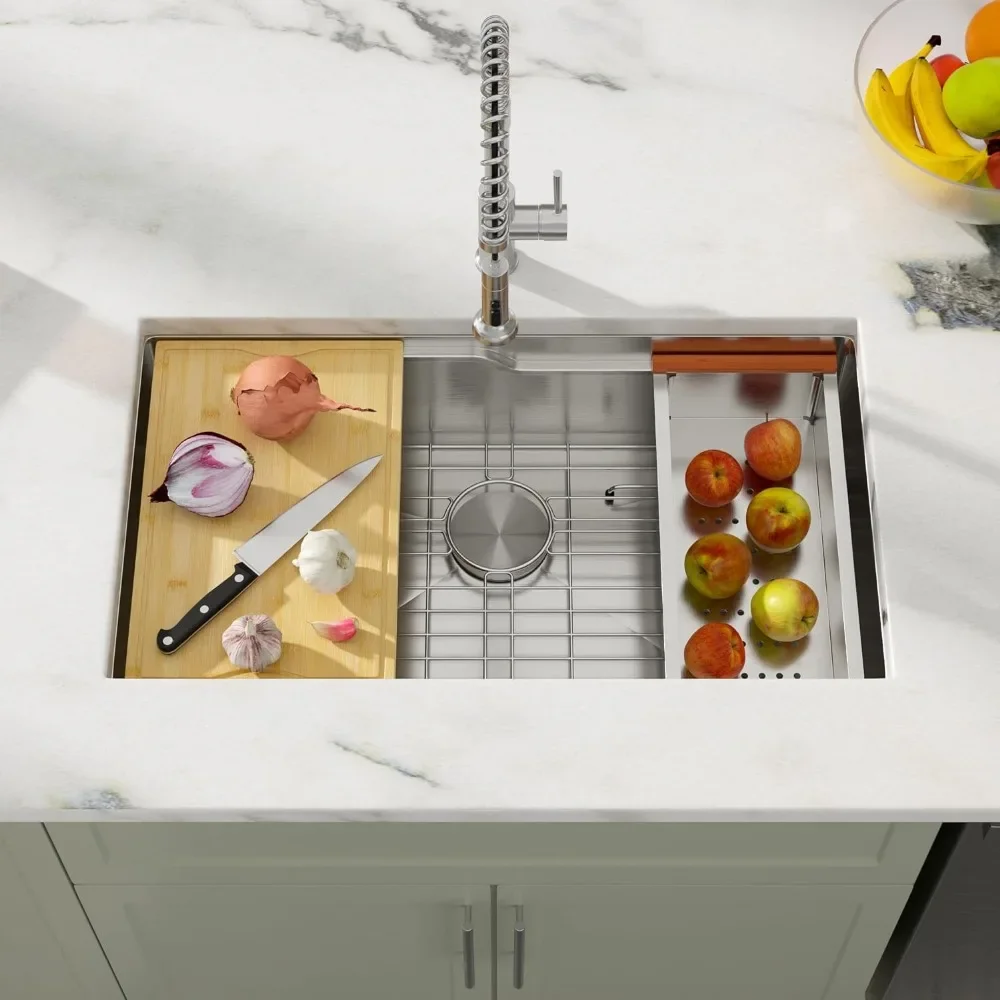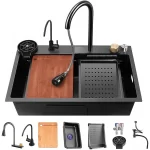A clean kitchen sink is essential for maintaining a hygienic cooking environment. Regular cleaning not only keeps your sink looking fresh but also prevents unpleasant odors and reduces the risk of bacterial growth. In this comprehensive guide, we’ll explore effective methods for cleaning kitchen sinks, focusing on various techniques and tips to ensure your sink stays spotless.
Understanding Your Sink Material
Different Types of Sink Materials
Before diving into cleaning methods, it’s important to understand the material of your sink. Kitchen sinks are commonly made from stainless steel, porcelain, granite composite, or cast iron, each requiring specific cleaning approaches. Stainless steel sinks are durable and resistant to stains but can show water spots. Porcelain sinks are prone to scratching and staining but can be cleaned with mild abrasive cleaners. Granite composite sinks are non-porous and resistant to stains but may need special cleaning agents. Cast iron sinks are often coated with enamel and can be sensitive to harsh chemicals.
Choosing the Right Cleaning Products
Once you know your sink material, selecting the appropriate cleaning products is crucial. For stainless steel sinks, non-abrasive cleaners and stainless steel wipes are ideal. Porcelain sinks benefit from mild abrasives or baking soda. Granite composite sinks should be cleaned with pH-balanced cleaners to avoid damaging the surface. Cast iron sinks often require non-abrasive cleaners to prevent chipping the enamel. Always avoid using harsh chemicals or abrasive pads that can damage the sink’s finish.
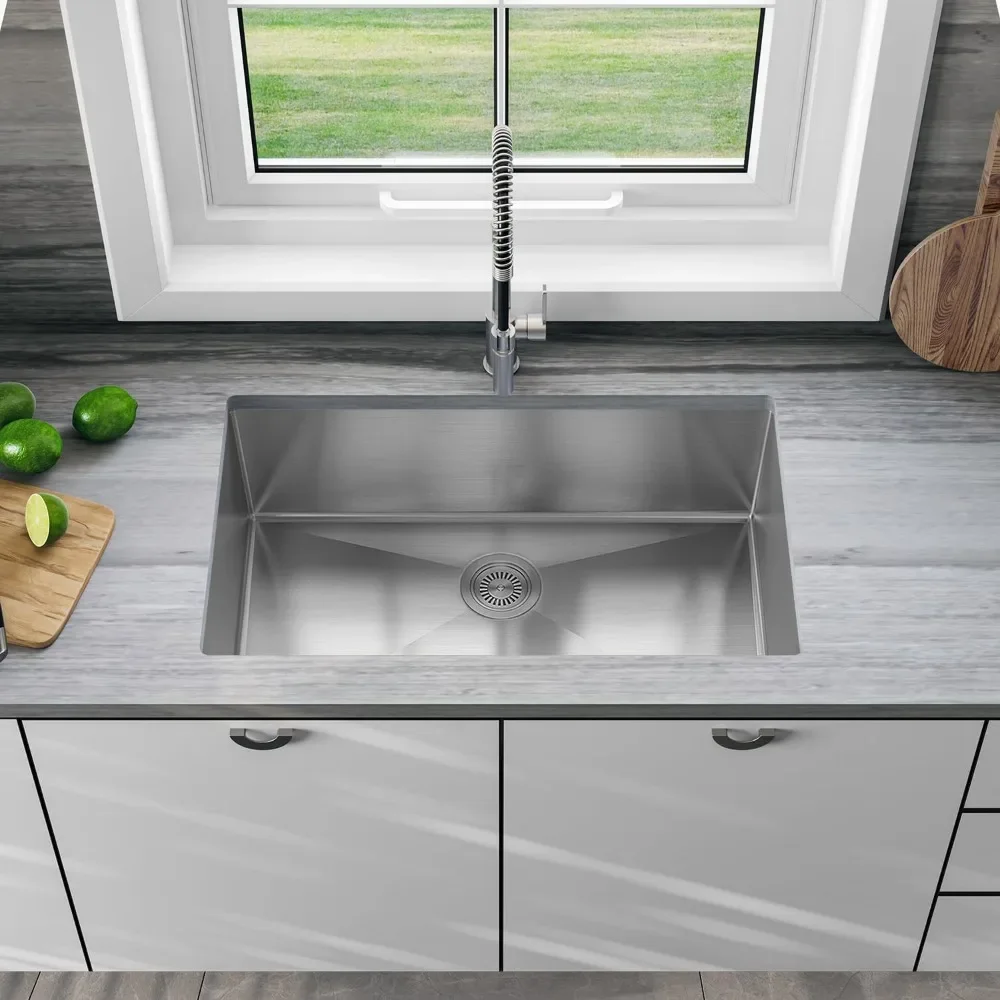
Daily Maintenance Tips
Rinsing and Wiping Down
Daily maintenance is key to preventing buildup and stains. After each use, rinse your sink thoroughly with warm water to remove food particles and residues. Use a soft cloth or sponge to wipe down the sink, paying attention to any areas where grime may accumulate. This simple routine helps prevent the formation of hard water stains and soap scum, keeping your sink looking clean and shiny.
Removing Food Debris
Food debris can cause unpleasant odors and attract pests if left unchecked. Use a sink strainer or stopper to catch food particles and empty it regularly. For stubborn debris, use a rubber spatula or spoon to gently scrape the residue away before rinsing. For sinks with garbage disposals, run cold water while grinding food scraps to flush them out effectively. This practice helps maintain a hygienic sink and prevents clogging.
Weekly Deep Cleaning Routine
Scrubbing with Baking Soda
A weekly deep cleaning is essential to maintain your sink’s cleanliness. Start by sprinkling baking soda over the entire sink surface. Baking soda acts as a natural abrasive that helps remove stains and grime without scratching. Use a damp sponge or cloth to scrub the baking soda in circular motions, paying attention to any stained areas. Rinse thoroughly with warm water to remove any residue. This method effectively cleans and deodorizes your sink.
Using Vinegar for Disinfecting
To enhance the cleaning process, use white vinegar as a natural disinfectant. After scrubbing with baking soda, spray or pour white vinegar over the sink and let it sit for a few minutes. The acidic nature of vinegar helps to break down mineral deposits and kill bacteria. After letting it sit, rinse the sink thoroughly with warm water. This step not only cleans but also disinfects the sink, leaving it hygienic and fresh.
Handling Stains and Tough Grime
Dealing with Hard Water Stains
Hard water stains can be a persistent issue in kitchen sinks, especially in areas with high mineral content in the water. To tackle these stains, create a paste using equal parts baking soda and lemon juice. Apply the paste to the stained areas and let it sit for 15-20 minutes. The acidic lemon juice combined with the abrasive baking soda helps to dissolve mineral deposits. Scrub gently with a sponge or cloth, then rinse thoroughly with warm water.
Removing Rust Stains
Rust stains can develop on sinks, particularly if metal objects are left in the sink for extended periods. To remove rust stains, use a mixture of equal parts baking soda and hydrogen peroxide to form a paste. Apply the paste to the rust-stained areas and let it sit for 30 minutes. Scrub the area with a soft brush or sponge, then rinse thoroughly. For persistent rust, you may need to repeat the process or use a commercial rust remover designed for your sink material.
Special Considerations for Sink Accessories
Cleaning Sink Strainers and Disposals
Sink strainers and disposals also require regular cleaning to prevent odors and clogs. Remove the sink strainer and wash it with hot, soapy water to remove food particles and grease. For garbage disposals, periodically grind ice cubes and citrus peels to clean the blades and eliminate odors. Additionally, run cold water while operating the disposal to help flush out any remaining debris.
Maintaining Sink Fixtures
Faucets and other fixtures in your sink area should be cleaned regularly to maintain their appearance and functionality. Use a gentle cleaner and a soft cloth to wipe down faucets, handles, and sprayers. For mineral buildup around the faucet aerator, soak the aerator in a mixture of equal parts vinegar and water, then scrub with a small brush. Rinse thoroughly and reattach the aerator.
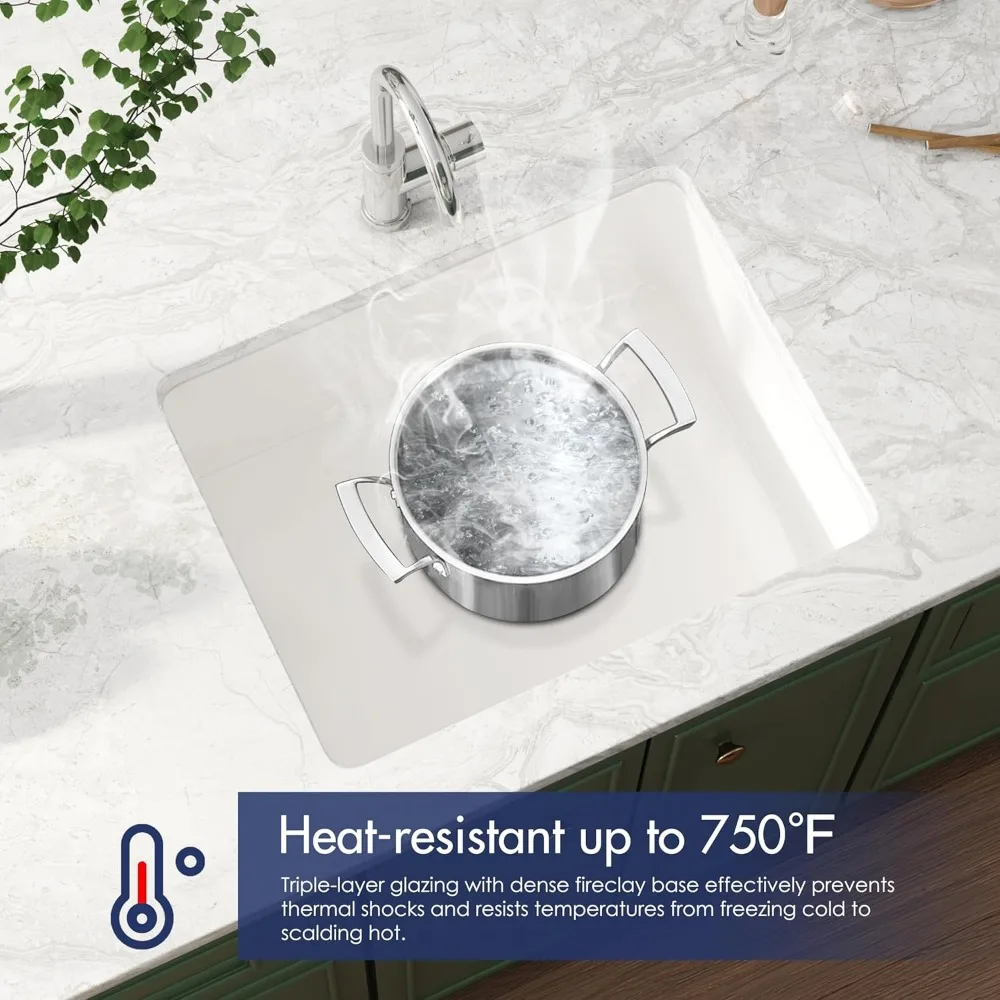
Preventive Measures to Maintain a Clean Sink
Avoiding Common Sink Cleaning Mistakes
Preventive measures are crucial to maintaining a clean sink and avoiding damage. Avoid using abrasive sponges or harsh chemicals that can scratch or damage the sink surface. Do not leave acidic foods or beverages in the sink for extended periods, as they can cause discoloration. Regularly check and clean sink seals and edges to prevent mold and mildew growth.
Implementing a Cleaning Schedule
To ensure consistent cleanliness, establish a regular cleaning schedule for your sink. Daily rinsing and wiping should become part of your routine, while weekly deep cleaning helps tackle buildup and stains. Consider creating a cleaning checklist or setting reminders to stay on track with your kitchen sink maintenance. A well-planned schedule ensures that your sink remains in excellent condition and reduces the need for extensive cleaning.
Addressing Sink Clogs and Drain Issues
Using Natural Drain Cleaners
Sink clogs can disrupt your cleaning routine and lead to unpleasant odors. To address minor clogs, use natural drain cleaners like baking soda and vinegar. Pour baking soda down the drain, followed by vinegar, and let the mixture fizz for 15 minutes. Rinse with hot water to flush out any loosened debris. This method helps keep your drains clear without resorting to harsh chemicals.
When to Call a Professional
For more severe drain issues or persistent clogs, it may be necessary to call a professional plumber. If you’ve tried natural remedies and still experience slow drainage or blockages, a plumber can use specialized tools to address the problem. Regular maintenance and prompt attention to drainage issues can help prevent more serious plumbing problems in the future.
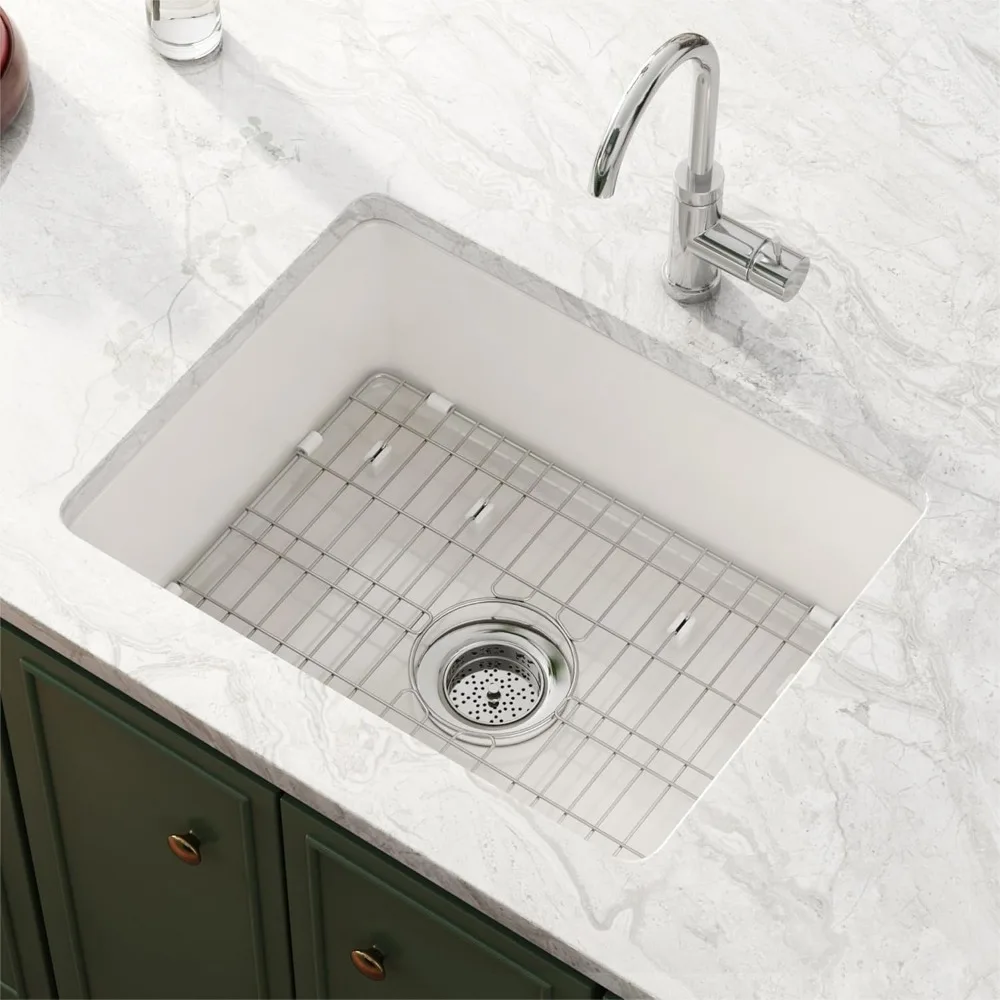
Conclusion
Maintaining a clean kitchen sink involves a combination of daily upkeep, weekly deep cleaning, and special treatments for stains and grime. By understanding your sink material, using the right cleaning products, and implementing preventive measures, you can ensure that your sink remains a sparkling and hygienic part of your kitchen. Regular attention and care will not only enhance the appearance of your how to clean kitchen sinks but also contribute to a healthier and more pleasant cooking environment.
